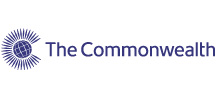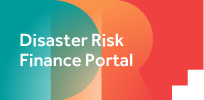Countries Search
Countries
Filters
Filter your search by checking and unchecking the boxes below.
Before or After the disaster?
Own or Transfer the risk?
Instrument type?
Countries
Instruments Available
The African Disaster Risk Financing Programme(ADRiFi) supports eligible countries to access risk transfer services through premium support for parametric weather insurance offered by African Risk Capacity. Between 2019 and 2023, ADRiFi will support premium financing: until the 4th year of participation, a country will receive premium support of up to 50% of the country’s annual premium, and from the 5th year onward, countries will be in a better position to fully finance their premiums from their national budgets and maintain sustained domestic resource allocation for insurance premium. ARC insurance allows for pay-outs being disbursed automatically when pre-defined risk thresholds are exceeded.
AfDB Long-term Relief Assistance Operations offer long term nature loans for rehabilitation and reconstruction operations that aim to repair the damage caused by natural or man-made disasters. For instance, repairs and reconstruction of damaged infrastructure and equipment, assistance in the revival of economic activities and social services, rehabilitation or reconstruction of roads, bridges, water and sewerage systems, schools, hospitals, or industrial and agricultural complexes. The focus is to bring economic and social infrastructures back to pre-disaster levels. These operations would also include preparedness activities that enable a country to forestall or prepare itself to better withstand emergency situations.
Long term nature grants provided to fragile states that include rehabilitation and reconstruction operations that aim to repair the damage caused by natural or man-made disasters. For instance, repairs and reconstruction of damaged infrastructure and equipment, assistance in the revival of economic activities and social services, rehabilitation or reconstruction of roads, bridges, water and sewerage systems, schools, hospitals, or industrial and agricultural complexes. The focus is to bring economic and social infrastructures back to pre-disaster levels. These operations would also include preparedness activities that enable a country to forestall or prepare itself to better withstand emergency situations.
The emergency relief operations of the AfDB’s Special Relief Fund are grants characterized by the need for prompt remedial actions to save and protect lives, salvage property and minimize the destruction of basic infrastructure. They are of a short-term nature, lasting from a few weeks to a few months.
Emergency funds provided by the African Disaster Risk Financing Programme (ADRiFi), a programme that aims to enhance the resilience and response to climate shocks in African countries.
In its capacity as a regional risk pool, the African Risk Capacity (ARC) allows participating countries to pool their country-specific risk into a single, better diversified portfolio, which results in a substantial reduction of premium costs. ARC is a Specialized Agency of the African Union established to help African governments improve their capacities to better plan, prepare, and respond to extreme weather events and natural disasters.
ARC Replica is a parametric (index) insurance product offered by ARC Ltd to World Food Program and other humanitarian partners as an approach to expand climate risk insurance coverage to more people and improve the effectiveness of emergency humanitarian response. ARC Replica Coverage allows UN agencies and other humanitarian actors to match ARC country insurance policies. By matching country policies, international resources would be used more cost-effectively through participation in ARC’s government-led risk management system while doubling the coverage of climate risk insurance. Humanitarian agencies would purchase replica insurance policies, thus doubling the level of coverage in each participating country.
Structure: The CCRT has two windows: (i) a Catastrophe Containment window, to provide assistance in containing a public health disaster; and (ii) a Post-Catastrophe Relief window, to provide exceptional assistance in the wake of a catastrophic natural disaster. The windows have different purposes, qualification criteria, and assistance terms.
Catastrophe Containment window:
Qualification: There are two alternative qualifying cases of public health disasters. The first concerns a life-threatening epidemic that has spread across several areas of the afflicted country, causing significant economic disruption, and has the capacity to spread or is already spreading to other countries. Significant economic disruption is defined by at least: (i) a cumulative loss of real GDP of 10 percent; or (ii) a cumulative loss of revenue and increase of expenditures equivalent to at least 10 percent of GDP. The second case concerns a life-threatening global pandemic that is inflicting severe economic disruption across the IMF membership and is creating balance of payments needs on such a scale as to warrant a concerted effort to support the poorest and most vulnerable countries through substantial additional grant support and debt service relief. To qualify for the support, the afflicted country should put in place appropriate macroeconomic policies to address the balance of payments needs.
Debt service relief: Eligible low-income countries that are hit by public health disasters as defined above may receive up-front grants for an initial tranche covering eligible debt falling due to the IMF within a period not exceeding six months. Additional tranches would be approved provided the CCRT has sufficient resources, for a period of up to two years from the date of the initial decision to grant relief.
Post-Catastrophe Relief window:
Qualification: A catastrophic natural disaster that has (i) directly affected at least one-third of the population; and (ii) destroyed more than a quarter of the country’s productive capacity, as estimated by early indications such as destroyed structures and impact on key economic sectors and public institutions or caused damage deemed to exceed 100 percent of GDP.
Debt flow relief: Eligible low-income countries hit by catastrophic disasters as defined above would receive debt flow relief on their debt service to the IMF falling due in the two years following the disaster.
Debt stock relief: Full cancellation of a country’s stock of debt to the IMF is also possible in cases where the disaster has created substantial and long-lasting balance of payments needs and where the resources freed up by debt stock relief are critical for meeting these needs. This would typically only be the case if the country faced a very high debt burden. Debt stock relief would be conditional on concerted debt relief efforts by the country’s official creditors and availability of resources in the CCRT.
The Emergency Response Coordination Centre (ERCC) supports a coordinated and quicker response to disasters both inside and outside Europe using resources from the countries participating in the EU Civil Protection Mechanism.
Rapid access to undisbursed IDA investment project balances. The Immediate Response Mechanism (IRM) complements longer-term emergency response tools available to IDA countries, such as the Crisis Response Window, offering them financial support within weeks rather than months of an emergency. The inclusion of contingent emergency response components in selected existing and/or future investment projects will facilitate the rapid disbursement of funds.
In the case of crises, notably natural disasters and economic shocks, IDA would provide immediate financing in support of recovery efforts, such as the activation or scaling up of safety nets to mitigate the impact on vulnerable groups, repair or restoration of basic physical assets, protection of critical development spending such as on health and education, and creation of programs to jump-start economic activity. The IRM will also provide an additional platform for a dialogue with IDA clients on crisis planning and disaster risk mitigation.
Grants provided to Red Cross/Crescent National Societies (rather than governments) for emergency relief and all activities which meet immediate needs caused by sudden, slow-onset or imminent disasters, including monitoring and evaluation.
Application guidelines:https://media.ifrc.org/ifrc/wp-content/uploads/sites/5/2020/07/20200511_DREF_Guidelines_ONLINE-_OPT_FINAL-1.pdf
Loans provided to Red Cross/Crescent National Societies (rather than governments) for emergency relief and start-up response to sudden, slow-onset or imminent disasters.
Application Guidelines: https://media.ifrc.org/ifrc/wp-content/uploads/sites/5/2020/07/20200511_DREF_Guidelines_ONLINE-_OPT_FINAL-1.pdf
Medium-term financing for protracted balance of payments (BoP) problems. The Extended Credit Facility (ECF) provides financial assistance to countries with protracted balance of payments problems. The ECF was created under the Poverty Reduction and Growth Trust (PRGT) as part of a broader reform to make the Fund’s financial support more flexible and better tailored to the diverse needs of low-income countries (LICs), including in times of crisis. The ECF is the Fund’s main tool for providing medium-term support to LICs.
The Rapid Credit Facility (RCF) provides rapid concessional financial assistance with limited conditionality to low-income countries (LICs) facing an urgent balance of payments need. The RCF was created under the Poverty Reduction and Growth Trust (PRGT) as part of a broader reform to make the Fund’s financial support more flexible and better tailored to the diverse needs of LICs, including in times of crisis. The RCF places emphasis on the country’s poverty reduction and growth objectives. No programme-based conditionality
Provide longer-term financing to strengthen economic resilience and sustainability by (i) supporting policy reforms that reduce macro-critical risks associated with climate change and pandemic preparedness, and (ii) augmenting policy space and financial buffers to mitigate the risks arising from such longer-term structural challenges.
The Standby Credit Facility (SCF) provides flexible financial assistance to low-income countries (LICs) with short-term balance of payments needs. The SCF was created under the Poverty Reduction and Growth Trust (PRGT) as part of a broader reform to make the Fund’s financial support more flexible and better tailored to the diverse needs of LICs, including in times of shocks or crisis.
JICA’s contingent loan linked to a disaster.
Grants extended under this program aim at mitigating the suffering of victims of all kinds of catastrophes around the world, including in Opec Fund for International Development (OFID) Member Countries. OFID emergency aid is channeled through specialized relief agencies, such as the IFRC, UNHCR, UNOCHA and the WFP.
The Pandemic Emergency Financing Facility (PEF) – a financing mechanism housed at the World Bank – is designed to provide an additional source of financing to help the world’s poorest countries respond to cross-border, large-scale outbreaks. The PEF complements the much larger role that IDA, the World Bank’s fund for the poorest countries, and other international organizations and donors play in financing outbreak response. The PEF’s design is unique in that payments can go directly to governments and pre-approved frontline responder organizations (such as WHO & UNICEF) and it can do so through either its cash window — or once triggered through its insurance window.
Start Fund is a multi-donor pool fund managed solely by NGOs for NGOs, with delegated authority from its donors. The fund is designed to disburse rapid emergency funding within 72 hours of an alert. It covers smaller ‘under-the-radar’ emergencies which often received little or no media attention and therefore attract little or no public funding.
Standard loan or grant (depending on country’s circumstances) provided in addition to standard allocations when an exogenous shock occurs. The primary objective of the CRW is to provide IDA countries with additional resources that will help to respond to severe economic crises and major natural disasters and return to their long-term development paths. In case of natural disasters, the CRW targets events that are exceptionally severe. The additional CRW financing would complement UN efforts to provide emergency relief by supporting safety nets for affected populations and restoring basic physical assets that were destroyed by the disaster.
GRiF is a multi-donor trust fund (MDTF) managed and implemented by the World Bank, with initial contributions from the governments of Germany and the UK. GRiF provides grants imbedded as part of World Bank projects to pilot and scale up financial solutions that help countries be financial prepared to respond to climate shocks, disasters, and crises. World Bank projects with GRiF funds are already underway in a number of Commonwealth countries: Malawi, Mozambique, Sierra Leone, and Jamaica.

